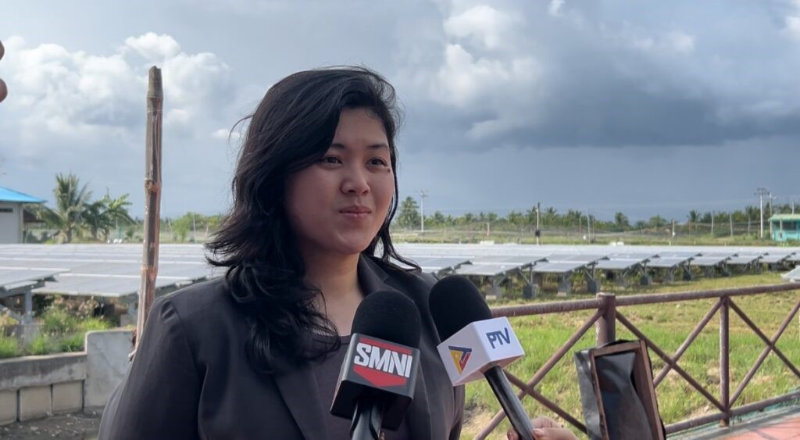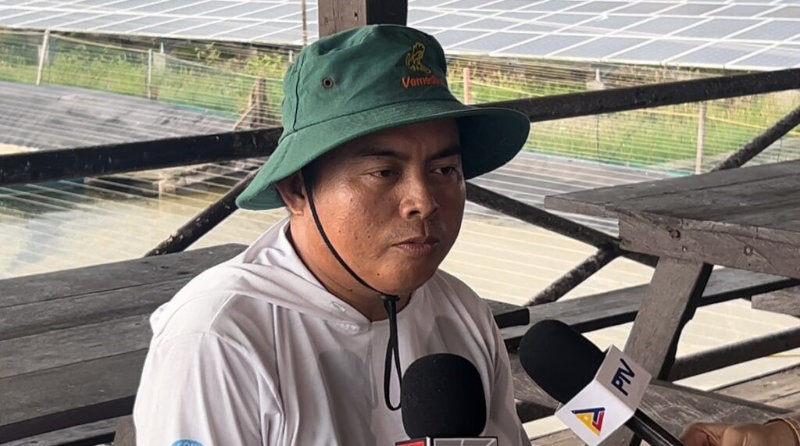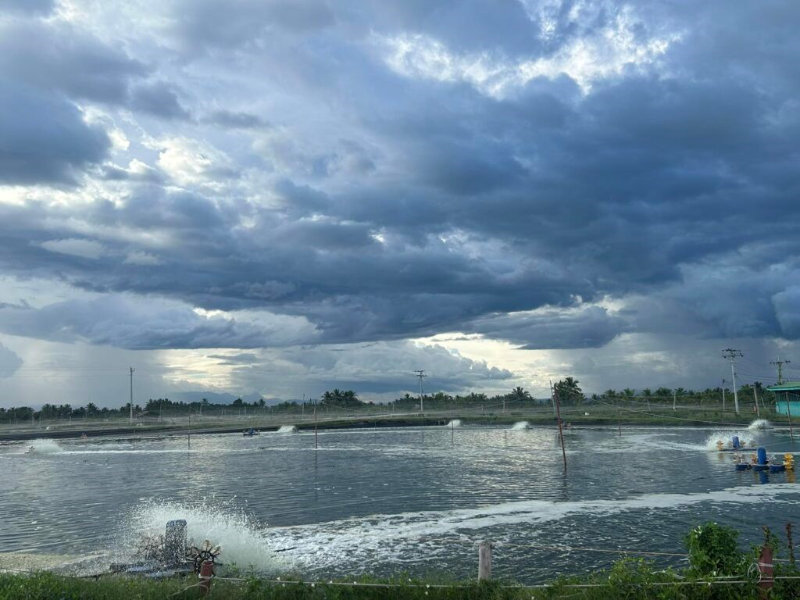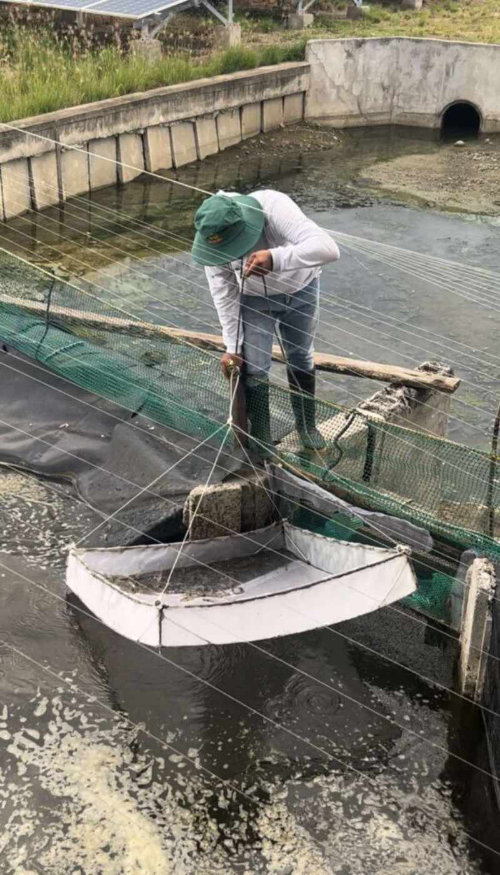The province of Sarangani, General Santos, produces tens of thousands of metric tons of shrimp daily, with 2018 industry records citing Sarangani hosts around 800 hectares of shrimp farms, which continues to grow annually as stakeholders eye expansion.
Geyser Limbague, a farm technician for San Andres Aqua Culture Corp. (Sanacor), has worked for the Mindanao aquaculture company for 15 years. One of his primary duties is feeding the shrimp.
 Sanacor engineering supervisor
Sanacor engineering supervisor
Shawna Velasco
Sanacor cultivates the Penaeus vannamei shrimp variety, also known as the Pacific White Shrimp or Whiteleg Shrimp. Many shrimp farmers or producers prefer the P. vannamei because it’s relatively easier to culture, has a better survival rate, and requires less protein in its diet, which means a lower cost of feeds compared to the Penaeus monodon, commonly known as the giant tiger prawn.
 Geyser Limbague, Sanacor farm technician
Geyser Limbague, Sanacor farm technician
They get fed five times daily, during which Limbague and the other farm technicians switch off the pond aerators, a tool that dissolves free oxygen into pond water, to let the feed settle. Because of the feeding schedule’s frequentness, they sometimes have to do it at night.

Sanacor has three shrimp farms in Sarangani, General Santos, each producing thousands of tons of shrimp monthly
However, when Sanacor switched to solar power, their jobs became more straightforward and cut production costs to help increase the farm’s income, among other benefits.
Limbague added that switching to solar power also supplied the farm with enough electricity to minimize the mortality rate since a sudden blackout or power fluctuation can affect the farm’s machinery responsible for providing clean water, dissolved oxygen, and water currents.

Limbague inspecting the shrimp cultivated on the farm
“We started to utilize solar power in order to help us in our production. The owner decided to shift because he thought saving up on electricity costs might be good, and he’s also very active in environmental activities,” said Shawna Velasco, Sanacor engineering supervisor.
Velasco added that shifting the farm to solar power allowed them to explore other technologies that could promote farm production and sustainability. It also enabled them to save around 20 to 25 percent on electricity costs monthly, amounting to P800,000 or more.
“There are new kinds of technology that we’re exploring, wherein we tie up the solar plant to batteries. Kung gan’on, overnight ‘yung use ng electricity namin, not just during the day, and if that happens, maybe we can rely fully on solar energy (In that case, we use our electricity overnight, not just during the day, and if that happens, maybe we can rely fully on solar energy),” Velasco said.
Sanacor has three farms in Sarangani powered by solar energy, with one utilizing a floating solar panel installation to maximize the farm’s space. Each farm produces thousands of tons of shrimp monthly.
It operates on Huawei’s energy inverters for more efficient sun-to-energy conversion. The technology converts the output from the panel into reusable energy, which the farm now uses for production.
Meanwhile, the technicians can access real-time updates remotely about the solar panel system, including solar capacity output and demand, via an app.
Sanacor’s switch to renewable energy shows how the aquaculture industry can benefit from sustainable options, making their operations more efficient and environment-friendly.
By Patricia Bianca S. Taculao

 Search
Search




 Search
Search


